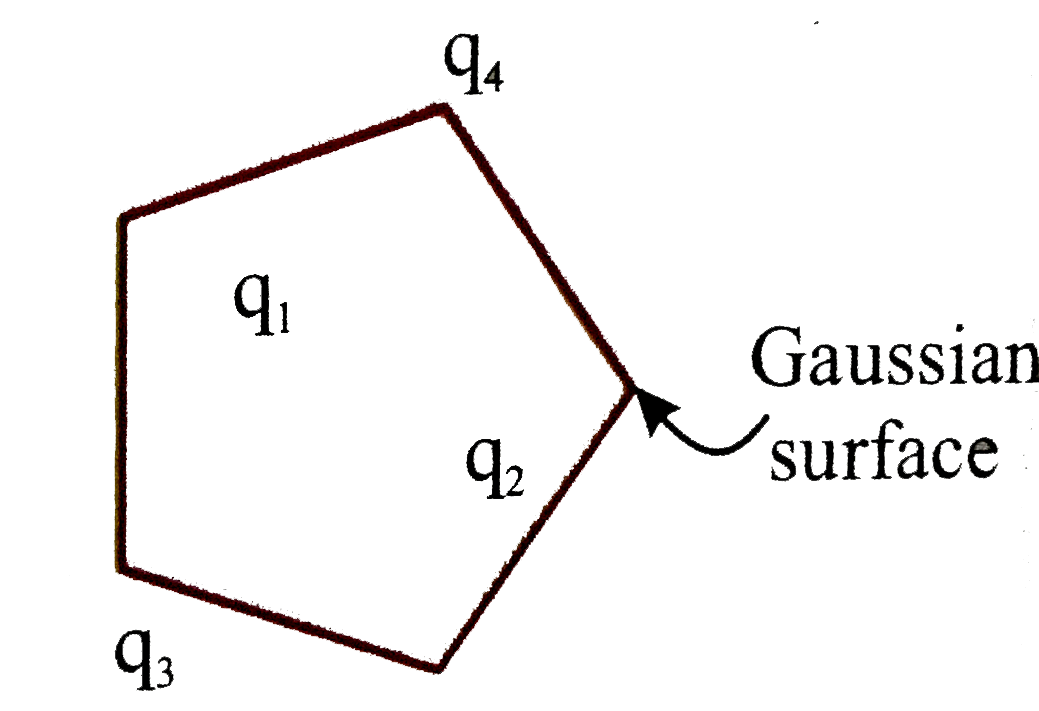Assertion:- In a given situation of arrangement of charges, an extra charge is placed outside the Gaussion surface. In the Gauss Theroem
∮→Ed→s=Q∈ε0.Q∈ remains unchanged whereas electric field →E at the site of the element is changed.
Reason:- Electric field →E at any point on the Gaussian surface is due to inside charge only. Solution in Gujrati
If both Assertion & Reason are True & the Reason is a correct explanation of the Assertion.
If both Assertion & Reason are True but Reason is not a correct explanation of the Assertion.
If Assertion is True but the Reason is False.
If both Assertion & Reason are False.
The correct Answer is:C
Assertion is true but reasoning is false.
Topper's Solved these Questions
- TEST PAPERSBOOK - ALLEN CHAPTER - TEST PAPERSEXERCISE - PAPER 3
92 Videos
- TEST PAPERSBOOK - ALLEN CHAPTER - TEST PAPERSEXERCISE - Part-1 Physics
15 Videos
- TEST PAPERSBOOK - ALLEN CHAPTER - TEST PAPERSEXERCISE - MATHS
1 Videos
- TEST PAPER 4BOOK - ALLEN CHAPTER - TEST PAPER 4EXERCISE - PHYSICS
45 Videos
- UNIT & DIMENSIONS, BASIC MATHS AND VECTOR BOOK - ALLEN CHAPTER - UNIT & DIMENSIONS, BASIC MATHS AND VECTOR EXERCISE - Exercise (J-A)
7 Videos
Similar Questions
A satellite S is moving in an elliptical orbit around the earth. The mass of the satellite is very small compared to the mass of the earth.
View SolutionA quantity of 2 mole of helium gas undergoes a thermodynamic process, in which molar specific heat capacity of the gas depends on absolute temperatureT , according to relation:
C=3RT4T0
where T0 is initial temperature of gas. It is observed that when temperature is increased. volume of gas first decrease then increase. The total work done on the gas until it reaches minimum volume is :-
View SolutionIf complex number z(z≠2) satisfies the equation z2=4z+|z|2+16|z|3, then what is the value of |z|4 ?
View SolutionTwo forces, each of magnitude F have a resultant of the same magnitude F. The angle between the two forces is
View SolutionMatch List I with List II and select the correct answer using the codes given below the lists :

View SolutionGauss's law and Coulomb's law , although expressed in different forms , are equivalent ways of describing the relation between charge and electric field in static conditions . Gauss's law is ε0ϕ=qencl,when q(encl) is the net charge inside an imaginary closed surface called Gaussian surface. The two equations hold only when the net charge is in vaccum or air .
The net flux of the electric field through the surface due to q3 and q4 is
View SolutionGauss's law and Coulomb's law , although expressed in different forms , are equivalent ways of describing the relation between charge and electric field in static conditions . Gauss's law is epsilon_(0) phi = q_(encl) ,when q(encl) is the net charge inside an imaginary closed surface called Gaussian surface. The two equations hold only when the net charge is in vaccum or air . If the charge q_(3) and q_(4) are displaced (always remaining outside the Gaussian surface), then consider the following two statements : A : Electric field at each point on the Gaussian surface will remain same . B : The value of oint vec(E ) .d vec(A) for the Gaussian surface will remain same.
View SolutionAssertion: Four point charges q1,q2,q3 and q4 are as shown in Fig,The flux over the shown Gaussians surface depends only on charges q1 and q2
Reason:Electric field at all points on Gaussians surface depends on any charges q1 and q2

View SolutionFigure shows a conducting sphere with a cavity. A point charge q_(1) is placed inside cavity, and q_(2) is placed out side the sphere vec(E)_("in") is electric field due to charge induced on surface of cavity. vec(E)_("out") is electric field due to charge induced on outer surface of sphere and vec(E)_("net") is net field at any point. Two closed gaussian surface S_(1) & S_(2) are also drawn in the figure.
View SolutionIf net charge enclosed by a Gaussian surface is zero, then Assertion :- vecE at any point on Gaussian surface is 0. Reason :- No net charge is enclosed by Gaussian surface, so E = 0
View SolutionAssertion : The electric field due to a discrete charge configuration is not defined at the locations of the discrete charges. Reason : For a surface charge distribution, electric field is discontinuous across the surface.
View SolutionA+q_(1) charge is at centre of an imaginary spherical Gaussion surface 'S', and -q_(1) charge is placed nearby this +q_(1) charge inside 'S'. A charge +q_(2) is located outside this Gaussian surface. Then electric field on Gaussian surface will be :
View Solutionthe electric field is given by →E=→Fq0 here the test charge q0 should be (a) Infinitesimally small and positive
(b) Infintestimally small and negative
View Solutionकथन : दी गये आवेशों के विन्यास में एक अतिरिक्त आवेश गाउसीय सतह के बाहर स्थित होता है ∮→E.d→s=Qin∈0,Qin अपरिवर्तित रहता है की स्थिति पर विधुत क्षेत्र →E परिवर्तिति होता है
कारण : गाउसीय सतह के किए भी बिन्दु पर विधुत क्षेत्र →Eसतह में स्थित आवेश के कारा ही होता है
View SolutionIf charge distribution within a Gaussian surface charges inside it, will electric field strength change inside and outside the Gaussian surface?
View SolutionAssertion : The electric field due to a discrete charge configuration is not defined at the locations of the discrete charges.
Reason : For a surface charge distribution, electric field is discontinuous across the surface.
View Solution
